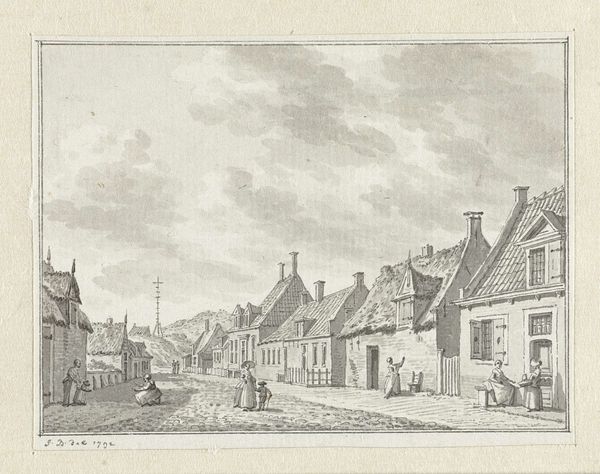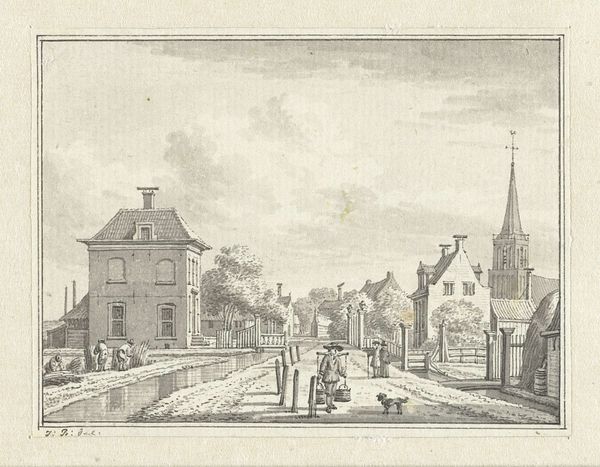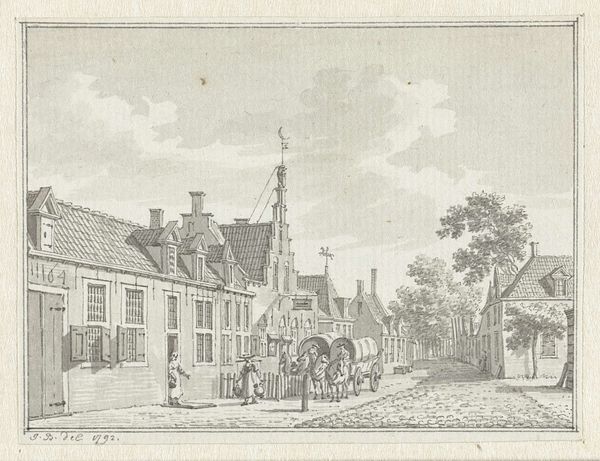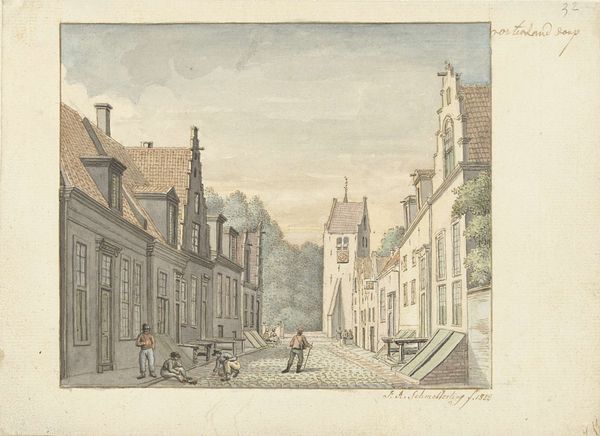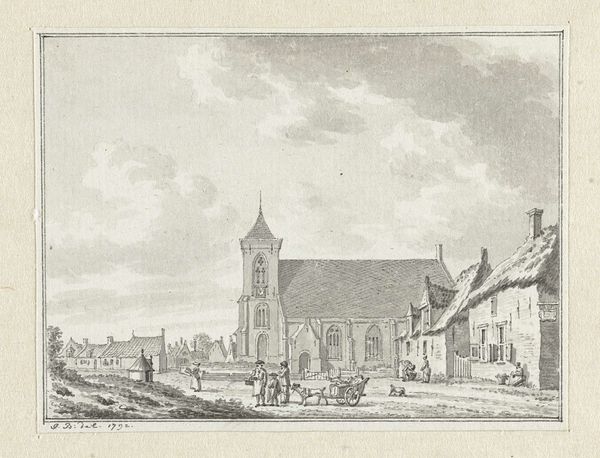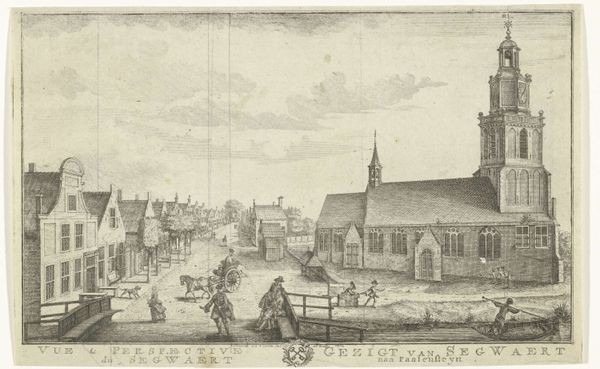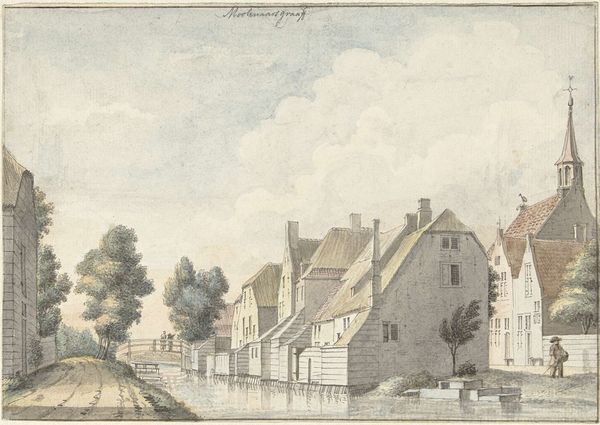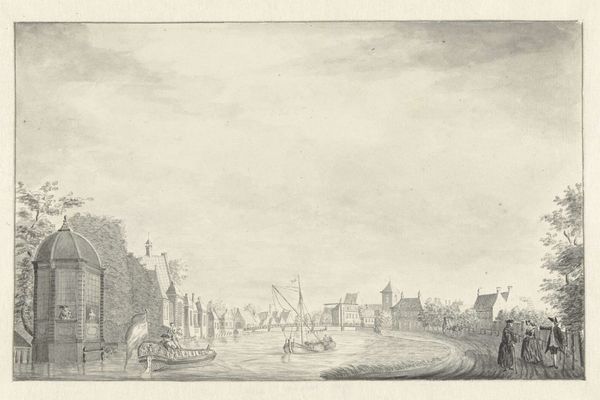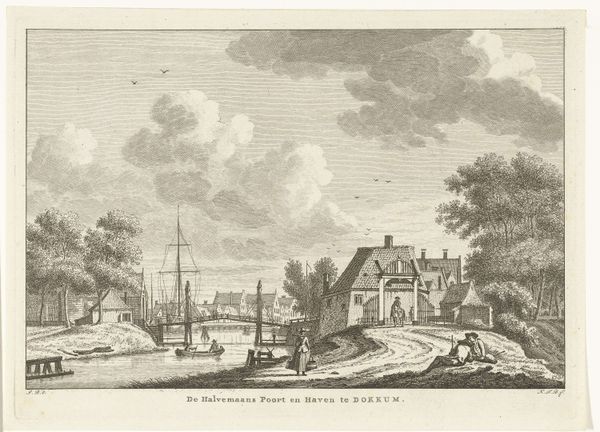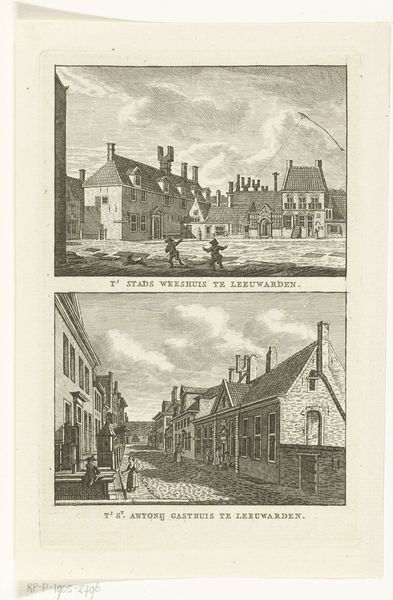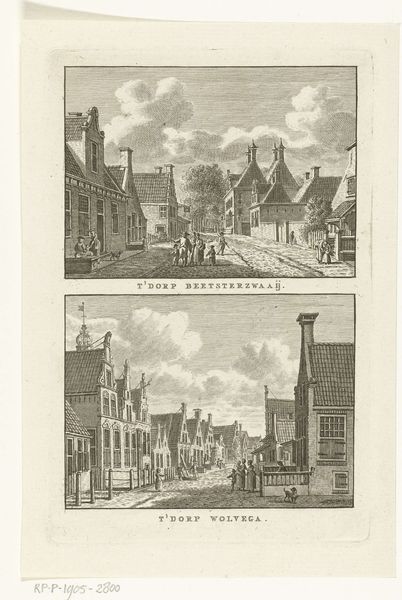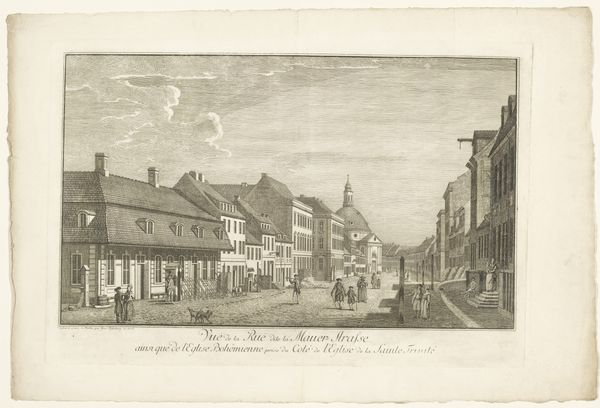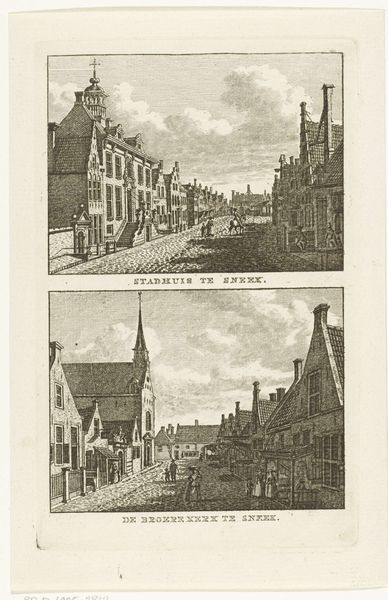
drawing, paper, ink
#
drawing
#
neoclacissism
#
landscape
#
paper
#
ink
#
romanticism
#
cityscape
#
genre-painting
#
street
Dimensions: height 80 mm, width 104 mm
Copyright: Rijks Museum: Open Domain
Curator: This is "View of Zoutelande," a pen and ink drawing on paper created in 1792 by Jan Bulthuis. Editor: My first impression is how delicate and calm this scene feels. It's a bustling street, but the monochrome palette lends it a sense of serenity. Curator: Indeed. Bulthuis was working at a fascinating intersection of Neoclassicism and Romanticism. The clarity of line and composition nods to the former, while the detailed rendering of everyday life aligns with the latter’s focus on sentiment and the individual’s experience. Editor: Look at the textures, though. The cobbled street, the different roof styles... It's all meticulously rendered, showcasing Bulthuis’ skill as a draughtsman and offering insight into the material conditions of this small town. Even the types of clothes tell us a lot about available textiles. Curator: And what's particularly interesting is how Bulthuis captures Zoutelande as it was experiencing significant social and economic shifts. The late 18th century saw the rise of a merchant class here, transforming these smaller coastal villages. His artwork isn’t merely picturesque; it’s documenting this societal transformation. Editor: It’s fascinating how a simple drawing can speak volumes about shifts in material culture. Look at the composition again. The perspective leads our eye through the street and encourages the viewer to consider production, transport, even how products arrived here for purchase. This small moment encompasses huge production chains. Curator: I agree. We often look to grand history, yet artworks like this one remind us that understanding these local narratives provides vital clues in constructing a comprehensive understanding of society at large. This view reminds us that culture emerges at ground level. Editor: Absolutely, and paying attention to the labor inherent in image-making gives insight to the historical conditions of production for art itself. Looking at those materials gives us information about both the physical reality and its social context. Curator: A final point that this piece highlights for me is the evolving relationship between the artist and their subject. Artists, Bulthuis included, had to find ways to position their creative work within a society shaped by institutions like the church and local governance, shaping what and how he rendered it. Editor: Yes, it is crucial not to disconnect this image from a tangible place and the means of its artistic construction. The labor and the land are intrinsically linked.
Comments
No comments
Be the first to comment and join the conversation on the ultimate creative platform.
